
Captain Blood is a 1935 American black-and-white swashbuckling pirate film from First National Pictures and Warner Bros. Pictures, produced by Harry Joe Brown and Gordon Hollingshead, directed by Michael Curtiz and starring Errol Flynn, Olivia de Havilland, Basil Rathbone, and Ross Alexander.
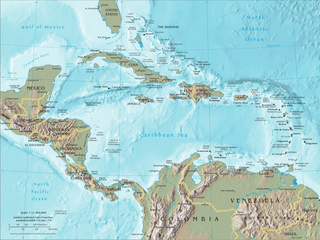
The era of piracy in the Caribbean began in the 1500s and phased out in the 1830s after the navies of the nations of Western Europe and North America with colonies in the Caribbean began hunting and prosecuting pirates. The period during which pirates were most successful was from the 1650s to the 1730s. Piracy flourished in the Caribbean because of the existence of pirate seaports such as Port Royal in Jamaica, Tortuga in Haiti, and Nassau in the Bahamas. Piracy in the Caribbean was part of a larger historical phenomenon of piracy, as it existed close to major trade and exploration routes in almost all the five oceans.

Captain Frederick Marryat was a Royal Navy officer and a novelist. He is noted today as an early pioneer of nautical fiction, particularly for his semi-autobiographical novel Mr Midshipman Easy (1836). He is remembered also for his children's novel The Children of the New Forest (1847). In addition, he developed a widely used system of maritime flag signalling, known as Marryat's Code.
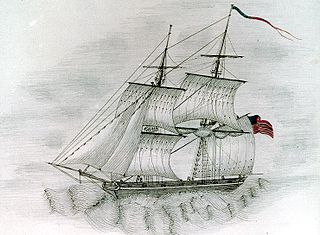
The second USS Somers was a brig in the United States Navy during the administration of President John Tyler. It became infamous for being the only U.S. Navy ship to undergo a mutiny which led to executions.

Clarissa Oakes is the fifteenth historical novel in the Aubrey-Maturin series by British author Patrick O'Brian, first published in 1992. The story is set during the Napoleonic Wars and the War of 1812.

Honor Among Enemies is a 1996 science fiction novel by American writer David Weber. It is the sixth book in the Honor Harrington series. In the book, Honor returns to active duty from her political exile on Grayson to command a Q-ship and fight space pirates.

John Percival, known as Mad Jack Percival, was a celebrated officer in the United States Navy during the Quasi-War with France, the War of 1812, the campaign against West Indies pirates, and the Mexican–American War.
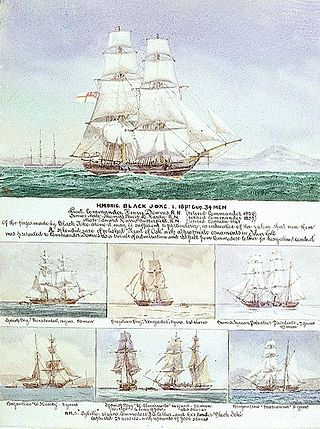
The West Africa Squadron, also known as the Preventative Squadron, was a squadron of the British Royal Navy whose goal was to suppress the Atlantic slave trade by patrolling the coast of West Africa. Formed in 1808 after the British Parliament passed the Slave Trade Act 1807 and based out of Portsmouth, England, it remained an independent command until 1856 and then again from 1866 to 1867.

Edward England was an Irish pirate. The ships he sailed on included the Pearl and later the Fancy, for which England exchanged the Pearl in 1720. His flag was the classic Jolly Roger — almost exactly as the one "Black Sam" Bellamy used — with a human skull above two crossed bones on a black background. Like Bellamy, England was known for his kindness and compassion as a leader, unlike many other pirates of the time.
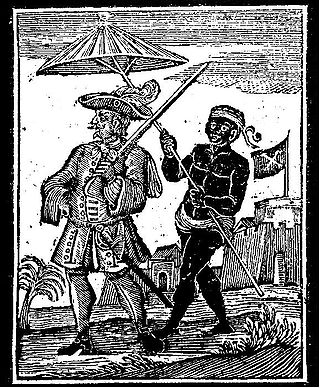
Henry Every, also known as Henry Avery, sometimes erroneously given as Jack Avery or John Avery, was an English pirate who operated in the Atlantic and Indian oceans in the mid-1690s. He probably used several aliases throughout his career, including Benjamin Bridgeman, and was known as Long Ben to his crewmen and associates.

The Golden Age of Piracy is a common designation for the period between the 1650s and the 1730s, when maritime piracy was a significant factor in the histories of the North Atlantic and Indian Oceans.

Mr Midshipman Easy is an 1836 novel by Frederick Marryat, a retired captain in the British Royal Navy. The novel is set during the Napoleonic Wars, in which Marryat himself served with distinction.
Jeremiah Cocklyn, better known by the name Thomas Cocklyn, was an English pirate known primarily for his association with Howell Davis, Olivier Levasseur, Richard Taylor, and William Moody.
Christopher Moody was a pirate as a member of Bartholomew Roberts' crew but was never a captain in his own right. He is best known not for his own actions but for a popular Jolly Roger flag mis-attributed to him as well as for later authors confusing him with unrelated pirate William Moody.
Alan Lewrie, KB, BT, is the fictional hero and main character of Dewey Lambdin's naval adventure series of novels set during the American and the French Revolutions and the Napoleonic Wars. The series spanned some twenty-five novels with a 26th reportedly in progress at the time of Lambdin's death in July 2021.
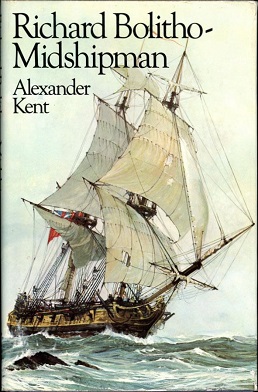
Richard Bolitho, Midshipman is a novel in the Bolitho series of nautical fiction set in the late-18th-century Royal Navy, written by Douglas Reeman under the pseudonym Alexander Kent. The book was published in 1975. It was the eighth novel in the series, though it is set earlier than the others, at the start of the career of Richard Bolitho.

The Battle of Cape Lopez was fought in early 1722 during the Golden Age of Piracy. A Royal Navy ship of the line under the command of Captain Chaloner Ogle defeated the pirate ship of Bartholomew Roberts off the coast of Gabon, West Africa.

The Atlantic World refers to the period between European colonization of the Americas (1492-) and the early nineteenth century. Piracy became prevalent in this era because of the difficulty of policy in this vast area, the limited state control over many parts of the coast, and the competition between European powers. The best-known pirates of this era are the Golden Age Pirates who roamed the seas off North America, Africa, and the Caribbean coasts.

Nautical fiction, frequently also naval fiction, sea fiction, naval adventure fiction or maritime fiction, is a genre of literature with a setting on or near the sea, that focuses on the human relationship to the sea and sea voyages and highlights nautical culture in these environments. The settings of nautical fiction vary greatly, including merchant ships, liners, naval ships, fishing vessels, life boats, etc., along with sea ports and fishing villages. When describing nautical fiction, scholars most frequently refer to novels, novellas, and short stories, sometimes under the name of sea novels or sea stories. These works are sometimes adapted for the theatre, film and television.
John Pro was a Dutch pirate best known for leading a pirate trading post near Madagascar.

















